SAN GINESIO
ROCCACOLONNATA
FORTIFIED WALLS AND GATES
| These walls, built from blocks of stone ashlars, with rectangular towers and polygonal escarpements, and defended by moats and crenelations, surround almost the entire urban center of S. Ginesio. The contruction was begun by the city in 1308 and completed in last half of the 15th century. The perimeter contained eight gates, four of which are still in existence: Porta Picena – previously called Porta Nuova (14th century) because it was one of the last built; it opens with an ogive arch at the foot of a crenelated tower; Porta Offuna (14th century) faces south with a gothic arch belonging to a square stone tower. It was built in memory of the Guiffone Castle donated to the Cinesini by the Giberti family; Porta Alvaneto, also called del Virgigno<7i>, (14th century ) is a an angular gate in blocks of stone ashlars with a gothic arch shouldered by the tower; the Porta Alvaneto gets its name from one the founders of San Ginesio; Porta Ascarana, also called Capocastello, (14th century), faces west and has a square plan, a fornix with an ogive arch and arched lintel in terracotta. The name derives from Ascaro, one of the first inhabitants of San Ginesio. There are no remaining traces of the Porta Brugiano, from the castle of the same name near frazione Santa Croce (known for the attack of Fermani in 1377), of the Porta Giardino in the Alvaneto quarter or of Porta Trensano from the castle of the same name in the Cesa quarter near the monastery of S. Giacomo. Of the Porta mercato or Mercatale, facing north, only some ruins remain. There is another well preserved “piece” of the walls called dei Tiratori because it was once a place where fabric was dyed and stretched. In fact, still visible on the interior side are stones with grooves and holes for stretching the hemp where clothes would be placed to dry after dyeing. |
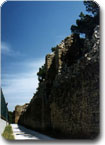
|
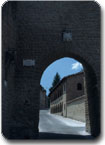
|
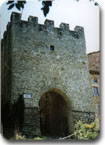
|
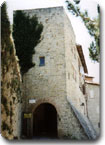
|
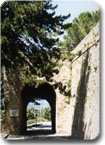
|
| Cinta Muraria | Porta Picena | Porta Offuna | Porta Alvaneto | Porta Ascarana |
Copyright © 2007 Parco Nazionale dei Monti Sibillini
Tutti i diritti riservati - All rights reserved
Revised -- 17/08/2007
URL:
http://www.sibillini.net/en/il_parco/cultura_territorio/castelli/San_ginesio.php